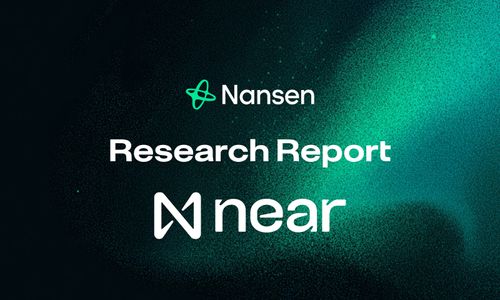Introduction
Ethereum’s next major upgrade, Pectra, is slated for early May 2025. Named after Prague (execution layer) and Electra (consensus layer), it combines a wide range of improvements that aim to make the network more scalable, user-friendly, and efficient for both validators and developers. Pectra is not about introducing radically new features, but about refining the infrastructure laid down by previous upgrades like Shanghai and Dencun. It targets practical problems: slow validator operations, high Layer-2 costs, and clunky wallet experiences.
After extensive testing, including full finalization on the Hoodi testnet, Ethereum developers confirmed a mainnet rollout for the first week of May. It’s a hard fork, so node operators and exchanges must upgrade but regular users and smart contracts don’t need to take any action. As with most Ethereum upgrades, the real effects will emerge gradually as wallets, dApps, and Layer-2 networks adopt the new features.
Streamlining Validator Operations
Pectra introduces significant changes to staking mechanics. The most notable is EIP-7251, which raises the maximum stake per validator from 32 ETH to 2,048 ETH. This allows larger stakers to consolidate multiple validators into one, making operations more capital-efficient. Another bonus is the likely increase in yield from auto-compounding of consensus layer rewards and lower costs for validators. The goal is to reduce the number of validators currently in the hundreds of thousands without weakening network security. However, the change is optional; independent validators can continue using 32 ETH slots.
To support this shift, the upgrade also reworks related mechanics. Exit limits are now based on the total amount of ETH rather than validator count, and slashing penalties scale with validator size to discourage risky behavior. Combined, these tweaks enable more flexible staking without compromising system integrity. Critics might worry about centralization, but Ethereum’s staking remains permissionless, and smaller operators aren't being pushed out just offered more efficient alternatives.
Pectra also makes it easier to join or leave the validator set. Deposits, which previously required consensus-layer coordination, will now be processed entirely on-chain through the execution layer, reducing activation time from 12 hours to about 13 minutes. Exiting becomes simpler too: validators will be able to initiate withdrawals via regular Ethereum transactions, using their withdrawal credentials instead of requiring access to the original validator key. These changes significantly lower the operational complexity for stakers.
Scaling Through Data Layer Improvements
Scalability is another focus. Pectra builds directly on the proto-danksharding architecture introduced in Dencun by doubling the number of “blob” data units per block from three to six, with a maximum of nine. This expanded capacity allows Layer-2 rollups to post more compressed transaction data to Ethereum, lowering their costs and enabling higher throughput. Users on rollups like Optimism or zkSync can expect cheaper, faster transactions without any changes to the base Ethereum fee structure.
To steer developers toward this improved data path, Pectra raises the gas cost for traditional calldata. This shift makes blobs not just better, but unequivocally cheaper for bulk data posting. The goal is to nudge apps and rollups away from legacy methods and toward Ethereum’s long-term scaling roadmap. While some older dApps might see higher costs if they rely heavily on calldata, the vast majority are expected to transition smoothly.
Behind the scenes, Pectra also lays technical groundwork for future scaling tools, including configurable blob parameters and initial support for Data Availability Sampling (PeerDAS). While users won’t notice these immediately, they are critical for future upgrades aimed at making Ethereum more lightweight and decentralized to operate.
Usability and Wallet Flexibility
From a user perspective, Pectra’s most noticeable improvement may be EIP-7702, which introduces temporary smart contract functionality to regular wallets (EOAs). Users will be able to attach a snippet of code to a transaction, letting them batch multiple actions, use custom signature schemes, or have someone else sponsor gas fees all without converting their account to a full smart contract wallet.
This kind of lightweight account abstraction opens the door to smoother interactions with dApps, particularly in sectors like DeFi and gaming. For instance, users could approve a token and execute a swap in one step, or onboard to a platform without needing ETH in their wallet. It brings Ethereum UX closer to the seamlessness of Web2 while retaining the security benefits of self-custody. Adoption will depend on wallet providers and dApp developers integrating the feature, but the protocol now supports it natively.
Developer and Protocol Improvements
Pectra also includes enhancements under the hood. A new precompiled contract allows smart contracts to efficiently handle BLS cryptographic operations, which are widely used in zero-knowledge proofs, trustless bridges, and Ethereum’s own consensus mechanisms. Previously, these operations were costly and error-prone. The change makes advanced applications more viable by reducing both gas costs and security risks.
Another developer-focused update extends the accessible block history from 256 to 8,192 blocks, enabling better support for light clients, rollups, and cross-chain systems. It’s a small but important step toward “stateless” Ethereum, where nodes can operate efficiently without storing the full chain history.
Finally, Pectra begins the transition to the EVM Object Format (EOF), a new structure for smart contract bytecode. These changes won’t break existing contracts, but they will make it easier to extend the EVM in the future and enforce cleaner coding practices. For now, it’s opt-in and mainly relevant for developers looking to build forward-compatible apps.
Broader Ecosystem Impacts
Layer-2 networks stand to benefit the most. By doubling blob capacity and making calldata more expensive, Pectra solidifies blobs as the standard for rollup data posting. This reinforces Ethereum’s role as a data availability layer and strengthens its rollup-centric scaling strategy. Expect lower fees on popular L2s and better user experience on dApps built atop them.
DeFi could also see a lift. With smarter wallets and gas sponsorship, platforms can streamline multi-step processes like token approvals, swaps, and leveraged trades. The barrier to entry drops when users don’t need ETH to start using a protocol. Whether DeFi apps will subsidize gas costs at scale remains to be seen, but the tools are now there.
NFTs and blockchain games, while not directly targeted by Pectra, benefit from the broader improvements. Lower L2 fees make minting and trading more accessible, and batch transactions allow new UX patterns like bulk purchases or listings. Projects using on-chain storage via calldata may face increased costs, but these are outliers in a space that’s already shifting to Layer-2.
Other sectors, from DAOs to social dApps, benefit from reduced friction. Gasless voting or simplified onboarding becomes more practical with the new wallet capabilities. Meanwhile, the upgrade doesn’t introduce backward-incompatible changes, meaning existing contracts continue functioning as-is.
A Measured Step Forward
Compared to earlier upgrades, Pectra is more comprehensive. Shanghai (April 2023) unlocked ETH withdrawals and Dencun (March 2024) introduced blobs for the first time. Pectra builds on both refining validator operations, scaling blob usage, and improving UX.
Critically, it’s not without trade-offs. If large validators consolidate using the 2,048 ETH cap, it could reduce the number of active validators. While this boosts efficiency and simplifies consensus, it raises concerns about centralization. The opt-in nature of the feature, however, limits the downside. Decentralization at the stake level remains unchanged, and overall security may even improve, as fewer validators means fewer opportunities for coordination failures.
Pectra doesn’t try to be flashy. It focuses on solving known pain points in staking, rollup costs, and wallet complexity. And it does so with measured changes that are largely additive, not disruptive. The upgrade reinforces Ethereum’s core strengths decentralization and security while nudging the ecosystem toward better performance and usability.
| Upgrade | Date | Focus | Key Contribution |
|---|---|---|---|
| Shanghai | Apr 2023 | Staking unlock | Enabled withdrawals, boosted LSD growth |
| Dencun | Mar 2024 | Scalability | Introduced blobs, cut L2 fees |
| Pectra | May 2025 | Usability & Efficiency | Doubles blob throughput, smart wallets, validator upgrades |
Looking Ahead
The Pectra upgrade is scheduled to go live in early May 2025. It will activate simultaneously across Ethereum’s execution and consensus layers. While some more advanced features like Verkle Trees and full Data Availability Sampling are deferred to future upgrades, Pectra delivers a meaningful step forward in Ethereum’s broader roadmap.
For users, the benefits will come gradually. Wallets need to adopt EIP-7702, and dApps must adjust to new data pricing rules. But the protocol is ready, and the incentives are aligned. Pectra doesn’t revolutionize Ethereum it makes it work better.
And in my opinion, that may be exactly what’s needed right now.




